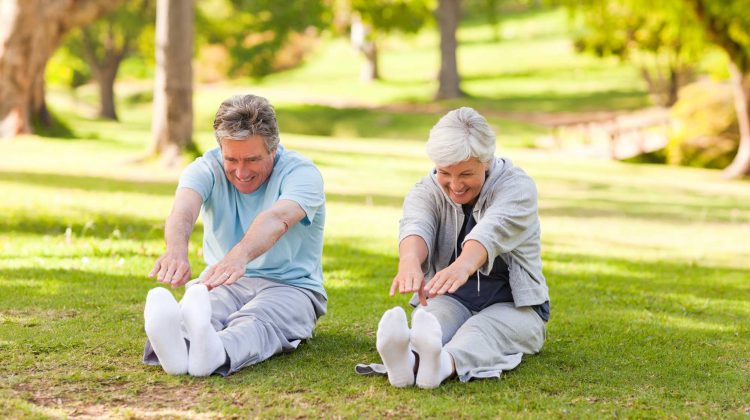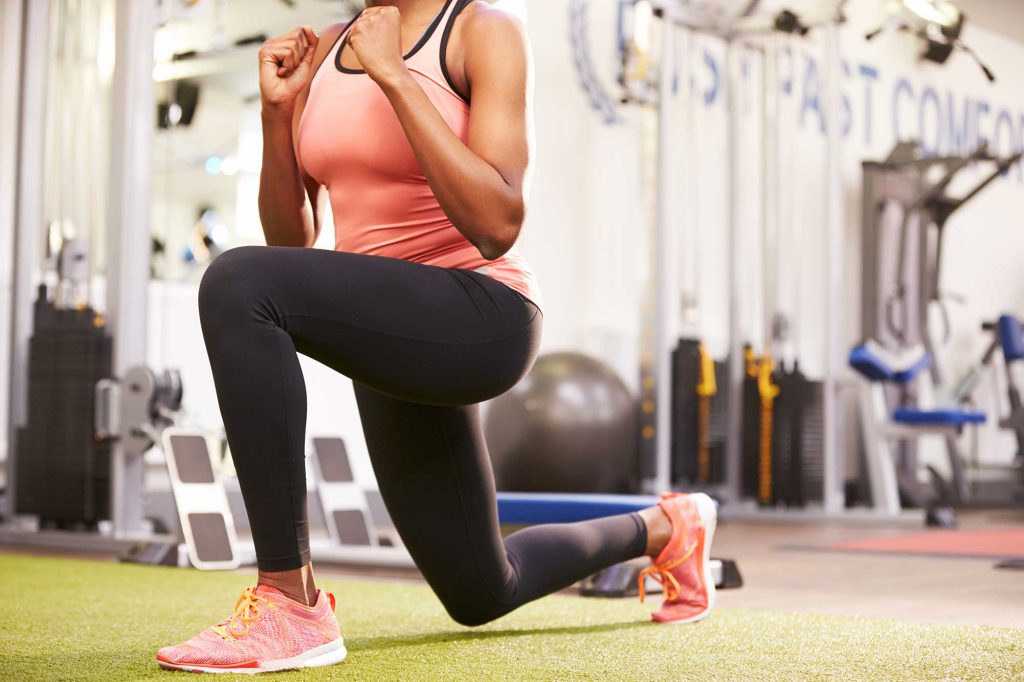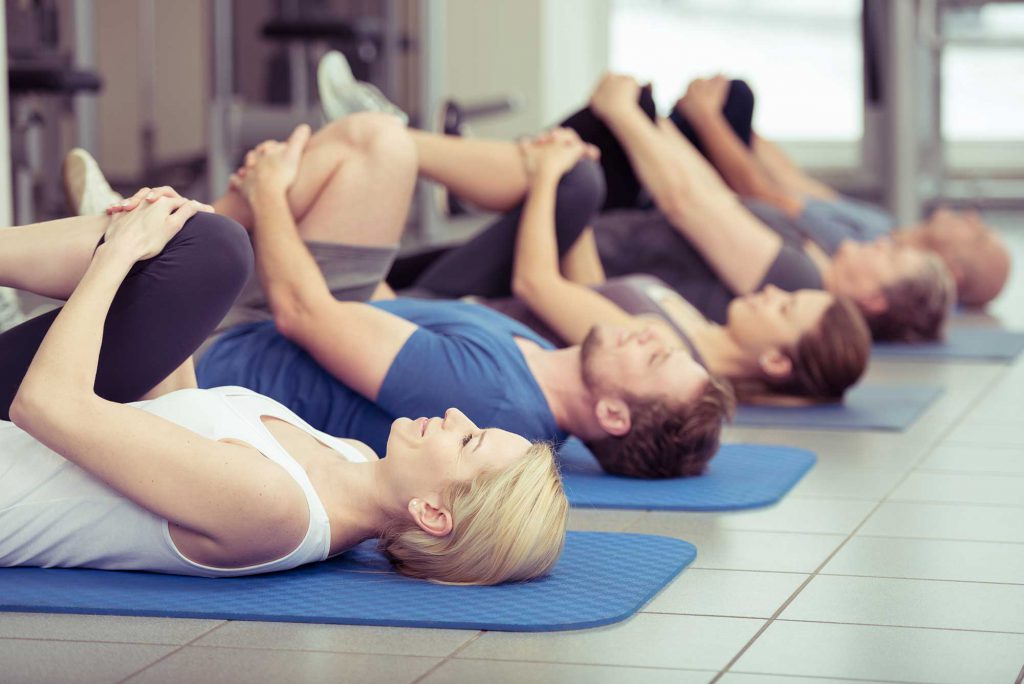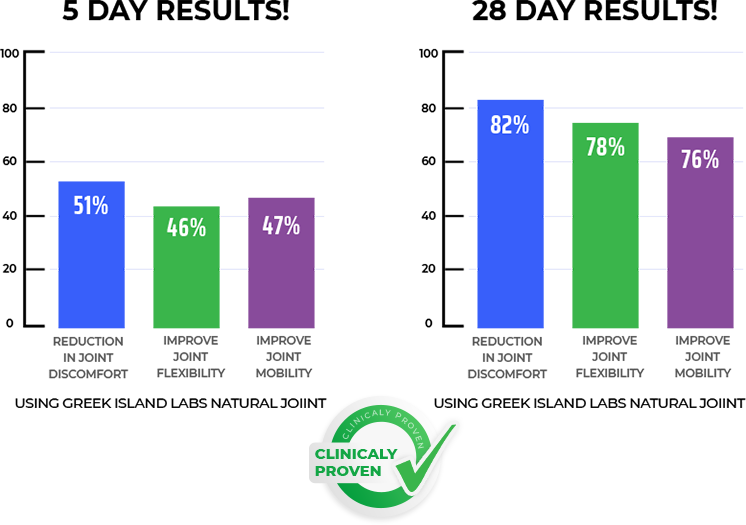 10 minute read
10 minute read
Joint pain is extremely common. Those with rheumatoid arthritis, tendonitis, and bursitis could tell you all about it — but joint pain doesn’t always stem from an underlying condition, it can affect anybody, from people with active lifestyles to those who sit at a desk all day.
Joint pain isn’t always serious. If pain persists for a couple of days or you experience swelling, it’s best to talk to a doctor, but if you’re just feeling achy, there are plenty of things you can do to alleviate discomfort and regain your range of motion.
Exercising regularly and stretching once a day are good ways to keep joint pain at bay. However, if you’re like most and experience occasional aches and pains in your joints, you can use these exercises below to find relief.
Before we dive in, please note, these exercises should be done slowly and mindfully. It’s not about reps, it’s about stretching your body and improving range of motion. You should approach these exercises as you would a gentle yoga session. And remember, listen to your body and don’t push yourself too far, or you risk exacerbating existing pains.
1. Lunges

Slow lunges are beneficial for both those with knee and hip pain. Forward lunges strengthen the knee joint to improve motion and reduce pain, and side lunges stretch the hips and combat stiffness.
To perform a forward lunge, put your hands on your hips and stand tall. Then, take one step forward (or backward, or you can alternate, as long as your leg is going straight out in front or behind you) and lower your body down slowly. Make sure your knee doesn’t fall over your toes and hold the position for 30 seconds.
Note: 30 seconds may not work for everyone, come back up to standing if you start to feel pain or discomfort.
Side lunges, as you can guess, are pretty similar to forward lunges. Instead of stepping forward or backward, take a large step to the side (so your feet are about shoulder-width apart) and lower down slowly into a squat. Hold the squat for 30 seconds if you can, and return to standing.
Alternate legs to give your knees a break. We recommend 10 lunges each leg to start. As you strengthen your joints, increase the number of lunges. Just be cautious to not over-do it.
2. Hand Stretches
Those who work all day at a computer are prone to pain in their wrists and fingers feeling achy, and it’s not uncommon for those who type the majority of the day to develop carpal tunnel.
If you start to notice pains in your fingers or wrists, try these few exercises:

- Stretch your fingers, relax, and stretch again. Do this a few times until you start to feel relief.
- Rotate your wrists up and down and side to side to loosen your joints.
- Pull your thumb back gently, hold for a few seconds, and let go.
- Put your hands in a prayer position in front of your chest. Keeping your hands palm to palm and close to your belly, slowly lower them down to your waist until you feel a stretch in your wrist.
- Hold your arm straight out in front of you with your palm facing up. Slowly bend your wrist back, and then with the opposite hand, grab your fingers and continue pulling your wrist back for a deeper stretch. Hold this for 30 seconds and then let go. Switch wrists, and repeat 3 times.
- Squeeze a stress ball throughout the day to strengthen your hand muscles.
3. Swimming

Swimming and exercises in the pool are great for those with more severe pain since water supports your body weight and relieves pressure on the joints. Plus, being in the pool and swimming is good for your overall health, too, as it improves mood and helps you sleep better.
The pool is a great place for an aerobic workout for those who don’t want to run or overwork their bodies at the gym. Swimming laps burns calories, helps control weight, and it also loosens your shoulders, hips, knees, and elbows. But if laps aren’t your thing, walking the perimeter of the pool can substitute walking outside and strengthen bones while working your legs and knees.
For those who have trouble with or experience pain while stretching, the pool is also a great place for low-impact stretches. We also suggest doing gentle stretches before and after any aerobic exercises, too.
4. Elliptical Training

For those who prefer aerobic workouts outside of the pool, the elliptical is a great place to start. These work both your arms and legs to get your knees, elbows, and shoulders moving, and they also improve balance. Plus, they are no-impact, so the elliptical offers many of the same benefits as running but it’s not as hard on your body.
We suggest starting slow with the elliptical, start at a low incline with moderate resistance, and work your way up as you go. Once you’re accustomed to elliptical workouts, you can switch from high to low incline and alternate resistance to make workouts more or less challenging.
Avoid using the elliptical every day, though — stick to 3 or 4 times a week to prevent further joint pain.
5. Figure Four Stretch

The last exercise on our list is one specifically for the hips. It’s easy to do and offers instant relief for joint pain and stiffness.
To achieve the Figure Four Stretch, lay down flat on your back with your knees bent. Then, put your right ankle over your left quad (or vice versa) and rest it there. Grab your left leg and pull it back toward your body — doing so will bring your right ankle closer to your chest.
Once you feel a comfortable stretch (don’t stretch too far or you may pull a hamstring), hold it for about 15 to 30 seconds before bringing your foot back down to the floor and uncrossing your leg. Then, alternate legs. We suggest doing this stretch on each leg 3 to 5 times for the best relief.
Tips for Relieving Joint Pain
If joint pain is impeding your daily life, we suggest talking with your doctor about your troubles. They’ll be able to refer you to a physical therapist who can develop the best workout plan for your particular needs.
When physical therapy and stretches aren’t cutting it, other things can help, such as pain relief supplements.
There are hundreds of pain relief supplements available — but don’t worry, we did the hard work for you and, with plenty of research, found a supplement that actually lives up to its claims: Natural Joint Advanced by Greek Island Labs.
We love this supplement not only because it eases aches and pains, but it’s also made entirely from plant-based ingredients and is safe for everybody. Unlike the majority of pain relief supplements, Natural Joint Advanced doesn’t contain glucosamine, an ingredient that’s been thought to improve joint pain.
Recent studies on the effectiveness of glucosamine have found this typical ingredient isn’t as pain-fighting as we think it is. And researchers have found supplements packed with minerals, vitamins, antioxidants, and anti-inflammatory ingredients are much more effective at delivering long-lasting pain relief and improving overall joint health.

Natural Joint Advanced was developed by a team of physicians and is clinically proven to reduce overall joint pain by 82 percent and increase mobility by 78 percent. Greek Island Labs recommends using the supplement once every day, and you can expect to feel relief after only five days. Clinical studies done on this supplement studied patients over a period of 28 days, meaning you can expect a drastic reduction in joint pain in about one month.
The ingredients in Natural Joint Advanced include carrot, avocado, orange, rosemary, olive leaves, cherries, and more. Each ingredient is based on the traditional elements of the Greek diet, and following the Greek diet has been considered an effective way to eliminate joint pain.
Natural Joint Advanced is not available in stores, but you can buy it on their website, naturaljoint.org. It costs $36 for a 1-month supply and comes with free shipping. Greek Island Labs is so confident in their product, they even offer a 30-day money-back guarantee.
OTC pain relievers and prescriptions can be helpful, but before delving into those, we suggest trying an all-natural supplement like Natural Joint Advanced. These supplements boost joint health at the core rather than mask discomfort, so they can truly help you lead a pain-free life.
Final Thoughts
If joint pain is bothersome from day-to-day, we recommend trying stretches and supplements to find relief from aches and discomfort. Typically, mild to moderate joint pain can be eased with simple lifestyle changes. However, if pain persists, we suggest consulting with your doctor, as they’ll be able to help you find the best solution for pain relief.
